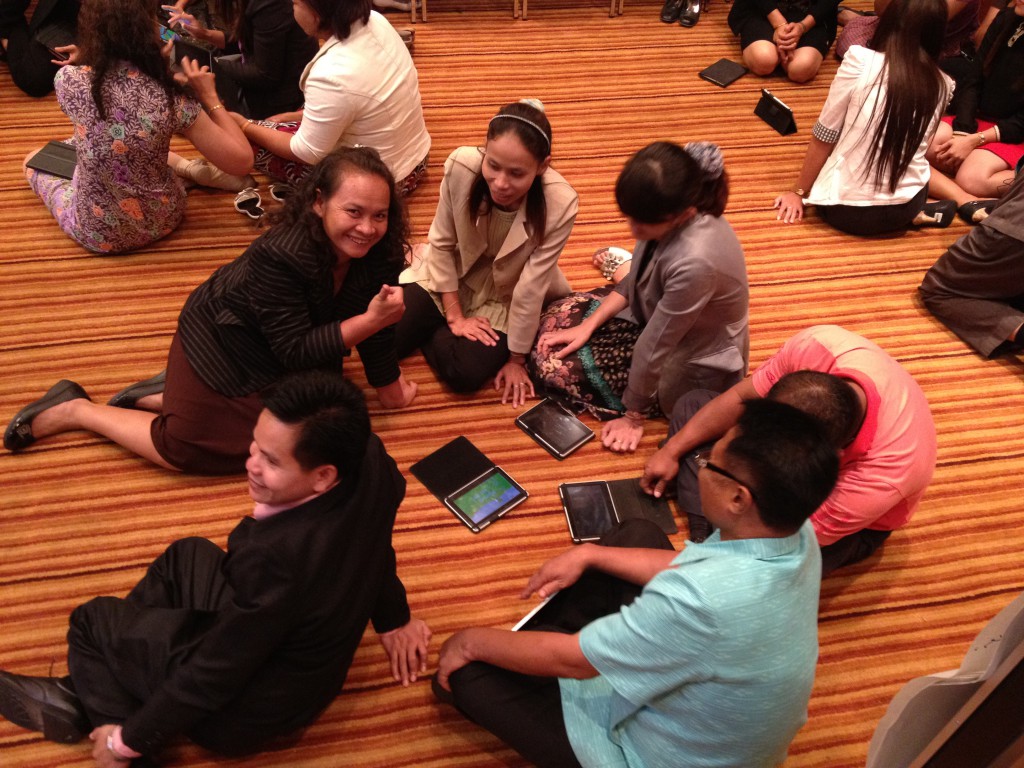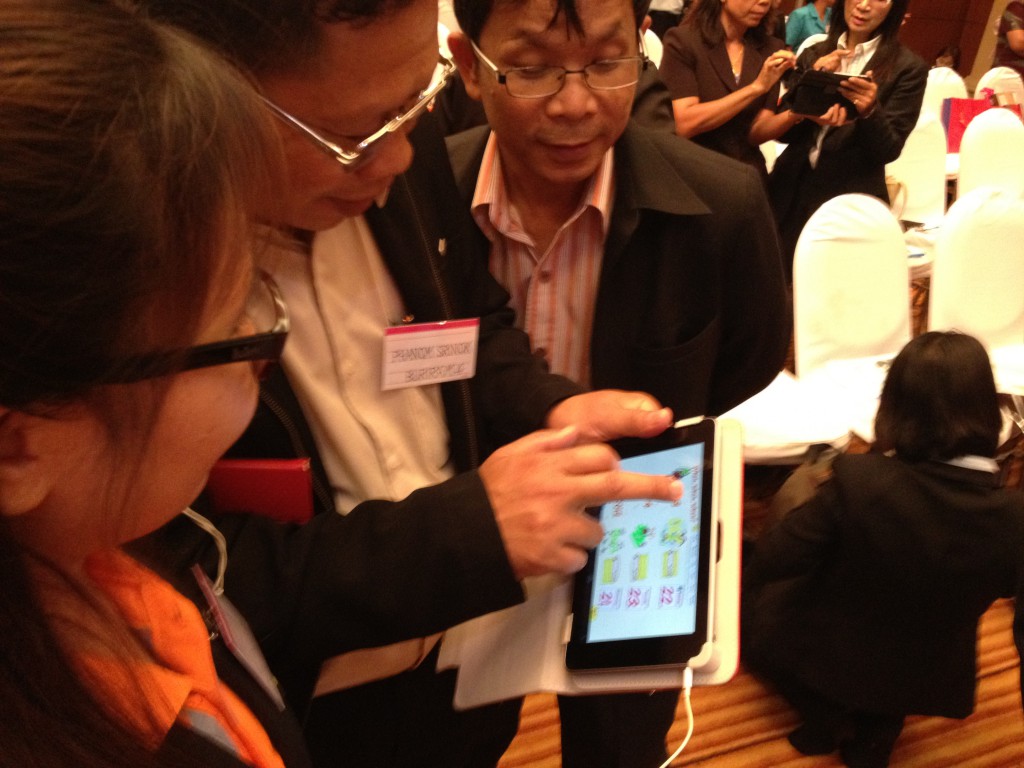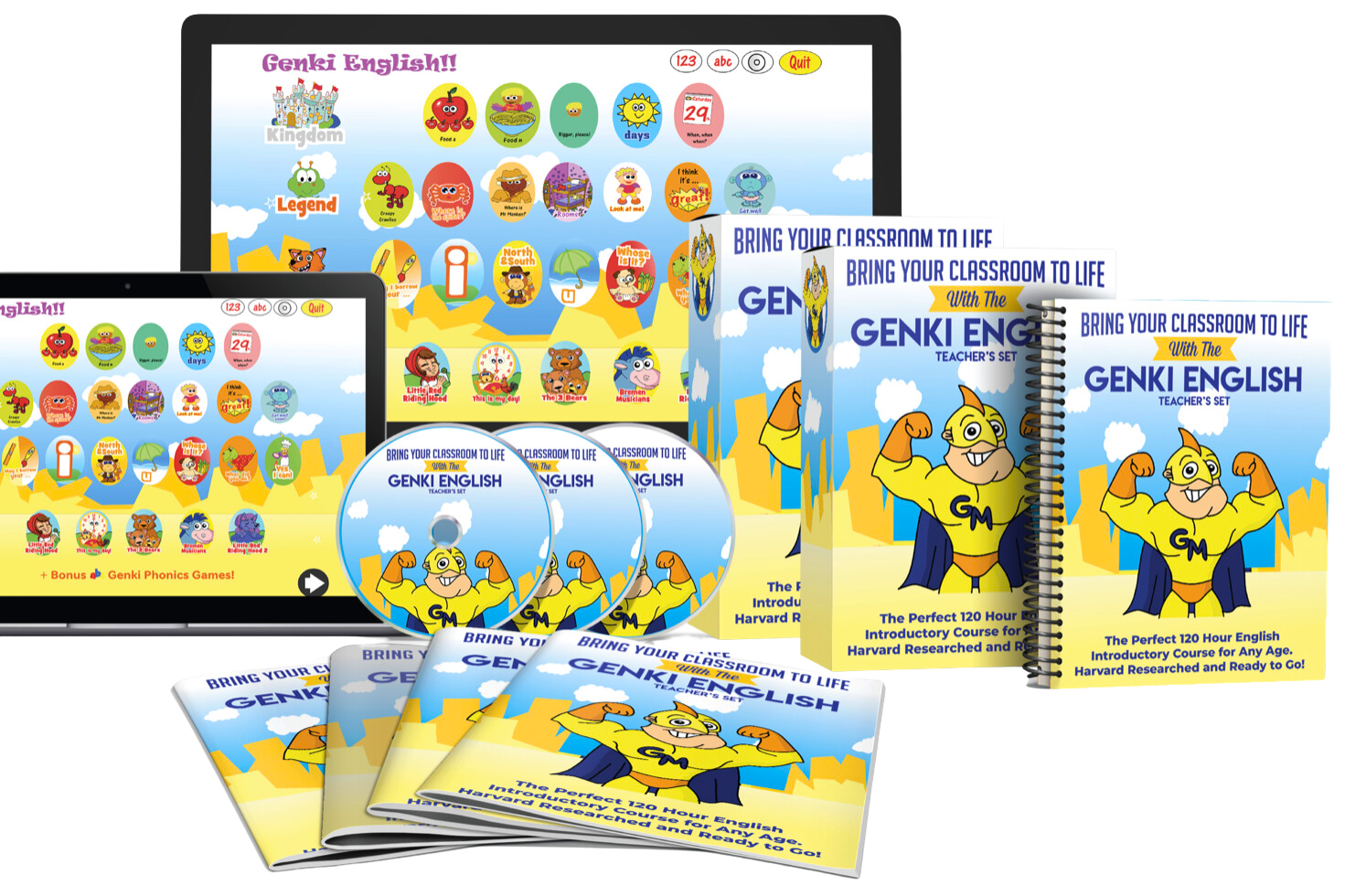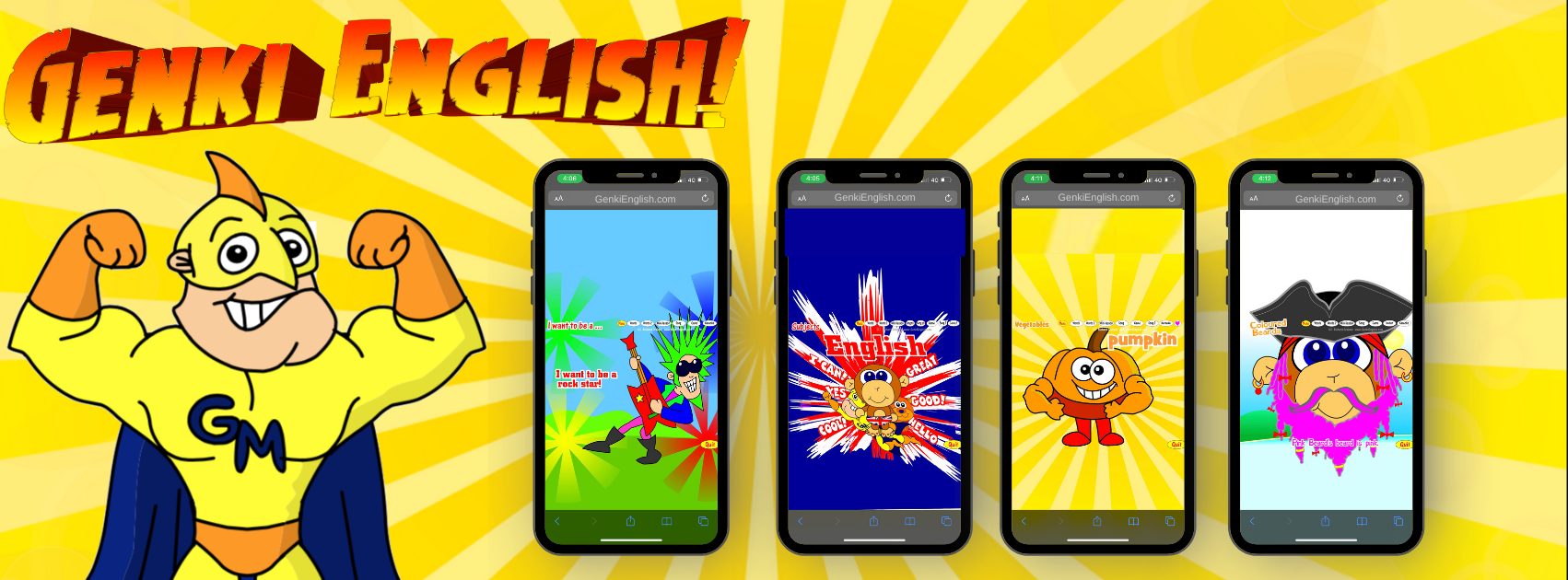
This afternoon I got my chance to try out the new One Tablet Per Child tablets that the Thai government has provided, along with Genki English software, to 800,000 children in primary year one.
The main benefit of tablets, compared with PCs, is that a 2 year old can use them. You don’t need any training, you can just use them. But of course just because a 2 year old can use them, doesn’t mean a 30 or 40 year old can! 🙂
So a lot of today’s training was putting the teachers’ minds at ease that they don’t need to know everything and every way to use the tablets.
The key, as always, is to set a definite learning outcome for the lesson (e.g. understanding the English in one theme) and leaving the “how” to the students. As long as there is a clear goal in place that they understand, they will always find a way.
Of course, from experience, we know that if you have no set goal they will just play games and watch Tom & Jerry! 🙂
The learning comes from the tablet, and the teacher’s new job is the feedback, eliciting “Try again” when they get it wrong, and using the Grandmother Technique – “Wow, how did you do that?” when they get it right!
Group Work Tips
As no country has ever introduced tablet computers to every student before, for my own research I wanted to put the teachers in groups and asked them to sum up their thoughts about the tablets so far (they have had them for one year by now although only year one teachers have used them.)
To stop these types of group discussions turning into a moan fest I always ask them to answer three things.
1) What are the good things?
2) What are the bad things?
3) How can we make things better?
If you frame it like this you will always get the bad, but also lots of very useful constructive info.
Here is what they came up with, and I’m putting it up here as it might be useful from a research point of view.
Good things
Helps the teacher
Students redo lesson themselves at home.
Students get native speaker pronunciation.
Students study in free time in school.
Interesting and motivating for the students.
Solves teacher’s pronunciation problems.
Students remember the English through three senses (visual, sound, movement)
The children remember the English for a longer time.Bad Things
Teacher don’t know how to use.
Difficult to control students.
Some teachers have low technology skill levels.
Teachers can’t see who is having problems.
Miss interaction between teachers and students.How to improve
Teacher need to learn how to use tablet
Want to learn different techniques for teaching
Teacher must prepare lessons in advance.
Teacher needs to use in special parts of lesson, not the whole time.
Overall I’m very happy to hear what they said, it’s certainly a different picture to the pessimism you hear about in the press. 🙂
And most of the bad points we can take care of with the Genki English lesson plans and computer discipline techniques (which I’ll get updated for use with tablets ASAP.)
Finally we got on to actually using the tablets in lessons.
I thought that, like with PC lessons, the computer games would be the best thing where the kids race to see who can do the game the fastest.
But as it happened the “Mini Lesson” (where I teach the song) actually proved to be just as valuable, which was very interesting.

Plus of course, for the adults, the “Words 1” pronunciation part was very useful.
So although it does take a lot of discipline, and I guess courage, to use the tablets in class, in really just an hour or so, even the teachers who hadn’t used the tablets seemed to go from a “this is a waste of time and too much hassle” to “this is actually really useful to me” and I guess for this type of workshop that is the first big hurdle we have overcome!
Now all we need is to figure out more best practices on how to use the tablets & get some concrete data on how it is effecting the children’s learning!
This could actually be a lot of fun. 🙂




Are they using a Genki English app or are they using the internet to access your Genki English software. I remember asking before about whether you had an app or not, but I’m just interesting how they are accessing Genki English from tablets. Can I do it with my iPad? By the way, great effort!!!
I have not experienced having tablets for each child but they have worked well in group settings. I would have the English activity set up on the tablets (one for each child in a group of 4) and while these children are doing that activity I would be doing a more hands on activity with the other group and then switch it around. It has worked well for me so far. I would love the chance to have one for each child in the class though.
Hello Richard! Did you make a special type of softwear for tables? If yes, did you start selling it? Or is it possible to adapt the one we have for tablets? Is it necessary to have tablets with special characteristics?
Do you have a special application for tablets? Or do you upload the resources from the CDs? It would be nice if you could make a video and show us how they use Genki English on a tablet.
It’s just the regular Download Pack that they are using (although the slightly older Thai version.)
It works great on Android tablets as you can see here: http://genkienglish.net/teaching/genki-english-on-an-android-tablet/
iPad is a whole other story There are a few threads about it on the VIP forum!
http://genkienglish.net/clipart/forum/viewforum.php?f=6
Looks great, Richard. Are the tablets used for other subjects, software, too?
Margit introduced me to the Smile Zemi course. It is great. The visuals help make the material easy to understand and they have incentives for the student to continue until they answer all the questions correctly
Everyday the child has the option to send the results to their parents. They ask for an e-mail address and it gives me how long she spent on each subject, what she scored each time. You can easily see how far they have progressed and what parts they have yet to complete.
Then they give you an option of sending a comment they chose or writ e one yourself. You have a choice of 3 different “stickers” to send as well.
I know this is a huge task to try and duplicate, but it shows you just how much is being done and how much more CAN be done.
Congratulations to you for making progress with the teachers in unfamiliar territory!
After a bit of tweaking the software works great on The Kindle Fire HD.There is the added advantage of being able to plug in an hdmi cable to view on an HDTV.
Hi Ken, that’s fantastic news! What tweaks did you need? Any chance of a video to see how well it works?
Hi Richard,
This is what I did…
1.On your Fire HD go to ‘settings’>’device’ then tick ‘allow installation of applications from unknown sources’.
2.Download and install ES File Explorer to your Fire HD from this link http://download.estrongs.com/app-es-file-explorer.html
3.Download Adobe Flash APK from http://download.macromedia.com/pub/flashplayer/installers/archive/android/11.1.115.34/install_flash_player_ics.apk
When you install it,it will ask which application you want to use it with.Choose ‘zip manager’.
4.Open ES file explorer and tap the download folder.
5.Long press (press and hold) the the ‘Adobe Flash’ zip file and delete’zip’ ( without quotes) from the end of the file name and add ‘apk’ (without quotes).
6.Tap the Adobe Flash icon and tap ‘yes’ to install.
7.Go to apps store and download the free SWF Viewer pro.
8.Connect your Kindle Fire HD to your computer using the USB cable and transfer your ‘Genki English Download Pack’ to one of the folders in the ES File explorer (I used the Kindle Folder).and you’re done phew!
10.To use your download pack open ES File explorer navigate to the folder you downloaded to and tap any of the flash files and there you are!
I’ll upload a video of it all working sometime later today.
Thank you so much for that Ken, can’t wait to try it out! 🙂
No problem Richard.The video is here…
http://youtu.be/7Sa82t0GqoY